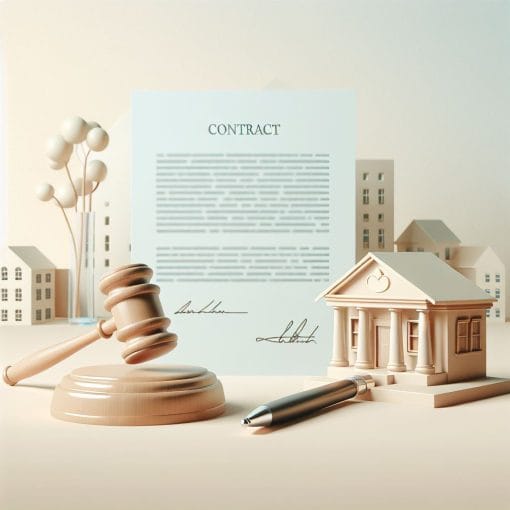In Ontario, if you win a civil lawsuit, there’s a good chance the losing party will have to pay a portion of your legal fees. However, it’s important to note that this typically covers only part of your costs, not the full amount. Why does this matter? Well, legal fees can be quite expensive, and understanding how costs work can help you set realistic expectations when navigating the litigation process.
The term “costs” refers to the legal fees and disbursements incurred by a party in a lawsuit. Contrary to common belief, there are no additional “court costs” imposed for using court facilities or the judge’s time, aside from standard filing fees prescribed by the Administration of Justice Act.
The principle that generally applies in Ontario is that “costs follow the cause.” This means that the successful party is typically entitled to recover a portion of their legal costs from the losing party. However, this is subject to judicial discretion under Rule 57.01 of the Rules of Civil Procedure. In some cases, costs may even be awarded against a successful party if the circumstances warrant it.
Courts have four main ways to award costs:
- Partial Indemnity (30-50%)
- This is a common cost award, covering only a portion of legal fees.
- Substantial Indemnity (50-70%)
- Awarded in cases where the court disapproves of a party’s conduct during the litigation or in relation to the matter at issue.
- Full Indemnity (100%)
- Rarely granted, this applies in exceptional cases, such as estate disputes involving misconduct or where a contract explicitly provides for full indemnity.
- No Costs
- This is actually very common, each party just has to bear their own legal fees, it often occurs when both parties achieve some degree of success;
- “No costs” is also often seen in cases that involve public interest. In such cases, both sides may be supported and funded by large organizations, advocacy groups, or wealthy donors who have a vested interest in the legal outcome. Because these parties are not personally burdened by legal fees in the same way as individuals or small businesses, the court may determine that costs should not be awarded based on the outcome. This prevents undue financial consequences from discouraging important legal battles that serve broader societal interests.
Worth to note: under s.76.12.1(1) of the Rules, cost awards in simplified procedure cases are capped at $50,000 for legal fees and $25,000 for disbursements, exclusive of HST.
Many people wonder why the law doesn’t award 100% cost recovery to the winning party. The rationale behind this is to ensure access to justice.
If full costs were (always) awarded by default, individuals with limited financial means might be too afraid to sue someone, even if they have a valid claim, due to the risk of being ordered to pay exorbitant costs in case they lose.
Unfortunately, cost awards can act as a deterrent for plaintiffs, especially in cases involving modest financial claims. For example, an employee suing for wrongful dismissal may be awarded $50,000 in damages but could spend $40,000 on legal fees. Even if they recover 50% of their costs from the employer, they could still lose $20,000–$30,000 in legal fees.
This risk often discourages plaintiffs from pursuing litigation unless the potential recovery is significantly higher than the legal expenses.
Judges exercise discretion in awarding costs under s.57.01 of the Rules, considering various factors, including:
- The principle of indemnity and the parties’ reasonable expectations
- The complexity and importance of the case
- The conduct of the parties and whether they prolonged the litigation unnecessarily
- Whether a party made reasonable settlement offers
- The amount claimed versus the amount awarded
- Whether any procedural mistakes were made by a party
- …
In some cases, procedural rules also impact cost awards. For instance, if a plaintiff should have used the simplified procedure but did not, they may be penalized with an adverse cost award.
In certain situations, courts may order costs against a non-party who is financing litigation behind the scenes. This typically happens when an impecunious plaintiff loses a case, and the court determines that a third party funded the lawsuit to harass the defendant.
In short, this rule prevents wealthy individuals from using another person “straw man” to litigate on their behalf without financial risk.
General Rules and Conditions for Security
Ontario’s Rules of Civil Procedure empower courts to order security for costs under Rule 56.01(1) in several circumstances, including where:
- The plaintiff resides outside Ontario and has no assets within the province
- The plaintiff is involved in multiple lawsuits for the same relief
- The plaintiff has outstanding cost orders from previous litigation
- The plaintiff is a corporation or nominal litigant with insufficient Ontario-based assets
- The claim appears frivolous or vexatious
Security for costs ensures that if the plaintiff loses, the defendant has a means of recovering their legal costs.
Security for Plaintiffs
A defendant can sometimes request that a plaintiff provide security for costs to ensure that funds will be available to cover any cost award if the plaintiff loses. This typically arises in two scenarios:
- If the plaintiff resides outside Ontario and lacks assets within the province, the court will almost automatically require them to post security. This ensures that the defendant has a viable means of recovering costs should they prevail.
- Even if the plaintiff is an Ontario resident, the defendant can still seek security for costs if there is reason to believe the plaintiff lacks sufficient assets to cover an adverse costs award.
- This is where litigation strategy comes into play. A defendant can file a motion requesting security for costs, forcing the plaintiff into a difficult position. The plaintiff must either:
- Plead poverty, thereby admitting they may lack the financial means to cover costs if they lose, which could impact their case credibility.
- Assert that they have sufficient assets to cover potential costs, effectively revealing their financial position to the opposing party.
- This tactic can be particularly effective in cases where the defendant suspects the plaintiff may be pursuing a claim with little financial backing, using litigation as leverage rather than having a strong substantive case. It is a clever technique that allows the defendant to “poke” at the plaintiff’s financial standing and potentially discourage weak claims.
- This is where litigation strategy comes into play. A defendant can file a motion requesting security for costs, forcing the plaintiff into a difficult position. The plaintiff must either:
Security for Defendants
While security for costs is most commonly requested by defendants against plaintiffs, plaintiffs can also request security for costs from defendants in certain situations. If a plaintiff has reason to believe that the defendant has no assets in Ontario or may not be able to pay costs if they lose, they can apply for security for costs. This is particularly relevant when:
- The defendant is a corporation that may dissolve or lack assets to pay costs
- The defendant has a history of not paying past cost orders
- The defendant has taken actions that suggest they may attempt to evade costs (e.g., moving assets offshore).
While less common, this can be a strategic tool for plaintiffs in cases where they suspect the defendant is using the litigation process to stall or evade financial responsibility.
Security for Appellants
Security for costs can also apply to appeals under Rule 61.06, particularly if:
- The appellant appears to lack the financial means to cover potential cost liabilities
- The appeal itself appears frivolous or vexatious
- Any of the conditions under above Rule 56.01 are applicable
Courts may require an appellant to post security for costs, both in relation to the appeal and to costs awarded in the lower court. This rule helps prevent parties from filing appeals solely to delay enforcement of a judgment while avoiding financial consequences.
The rules governing costs in Ontario civil litigation seek to balance fairness and access to justice. While costs generally follow the outcome of a case, they are rarely awarded in full. Courts exercise discretion when determining costs, considering factors like party conduct and case complexity. Because legal fees can be substantial, cost implications often influence whether a party proceeds with litigation.
Given these complexities, it is essential to discuss costs with your lawyer before pursuing a lawsuit. Understanding potential cost awards and liabilities will help you assess financial risks and make informed decisions about your legal strategy.




